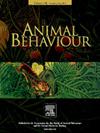地图和罗盘导航:动物地图的机制和个体发生
IF 2.3
2区 生物学
Q2 BEHAVIORAL SCIENCES
引用次数: 0
摘要
地图和指南针导航是一个两步的过程,在这个过程中,动物用地图确定目标方向,用指南针在这些方向上定位,这解释了动物之间的各种导航行为,从熟悉环境中的视觉地标导航,到从陌生地点长途返回。然而,尽管对地图的感官基础进行了广泛的研究,暗示了视觉、嗅觉和磁线索的作用,但它们的机制和个体发生的许多细节还不太清楚。在这里,我们引入了一个框架,将地图解构为三个组成部分:(1)线索,动物用来确定目标方向的环境属性的性质;(2)结构,用于确定目标方向的信息组织,区分离散和连续的地图结构;(3)实施,包括与动物如何接近目标以及动物如何组合多个信息源有关的策略。在某些情况下,遗传规则和印记参与了地图和指南针导航这些组成部分的个体发生。然而,在许多情况下,包括那些需要外推梯度或涉及多个目标之间灵活导航的情况,可能需要大量的学习;然而,动物是如何解决线索的空间排列来学习地图的,尤其是在大尺度上,人们对其知之甚少。确定自运动向量的机制,称为路径整合,在哺乳动物相对较小的空间尺度上的地图学习中起着重要作用;我们认为路径整合可以在其他分类群和更大空间尺度的地图学习中发挥类似的作用。这意味着路径整合在分类上更为广泛,在导航学习中发挥的作用比目前所认识到的更大。这一综述有助于澄清不同发现之间的联系,并提出有关导航机制和个体发生的问题,以更好地理解地图和罗盘在不同分类群和尺度上的导航。本文章由计算机程序翻译,如有差异,请以英文原文为准。
Map and compass navigation: the mechanism and ontogeny of animal maps
Map and compass navigation, a two-step process in which animals use a map to determine goalward directions and a compass to orient in those directions, accounts for a variety of navigational behaviours across animals, from visual landmark navigation in familiar environments, to returning long distances from novel sites. However, while extensive investigation into the sensory basis of maps has implicated roles for visual, olfactory and magnetic cues, many details of their mechanism and ontogeny are less well understood. Here, we introduce a framework that deconstructs maps into three components: (1) cues, the nature of the environmental properties that animals use to determine goalward directions; (2) structure, the organization of information used to determine the goalward direction, distinguishing discrete and continuous map structures; and (3) implementation, encompassing strategies relating to how animals approach their goals and how animals combine multiple information sources. In some cases, inherited rules and imprinting are involved in the ontogeny of these components of map and compass navigation. However, in many instances, including those which require extrapolation of gradients or involve flexible navigation between multiple goals, extensive learning is probably required; none the less, how animals resolve the spatial arrangement of cues to learn maps, especially over large scales, is little understood. Mechanisms for determining vectors of self-motion, termed path integration, play an important role in map learning in mammals over relatively small spatial scales; we suggest that path integration could play a similar role in map learning in other taxa and over larger spatial scales. This would imply that path integration is more taxonomically widespread and plays a greater role in navigational learning than currently appreciated. This review helps to clarify links between disparate findings and raises questions about navigational mechanisms and ontogeny to better our understanding of map and compass navigation across taxa and scales.
求助全文
通过发布文献求助,成功后即可免费获取论文全文。
去求助
来源期刊

Animal Behaviour
生物-动物学
CiteScore
4.60
自引率
8.00%
发文量
236
审稿时长
10.2 weeks
期刊介绍:
Growing interest in behavioural biology and the international reputation of Animal Behaviour prompted an expansion to monthly publication in 1989. Animal Behaviour continues to be the journal of choice for biologists, ethologists, psychologists, physiologists, and veterinarians with an interest in the subject.
 求助内容:
求助内容: 应助结果提醒方式:
应助结果提醒方式:


